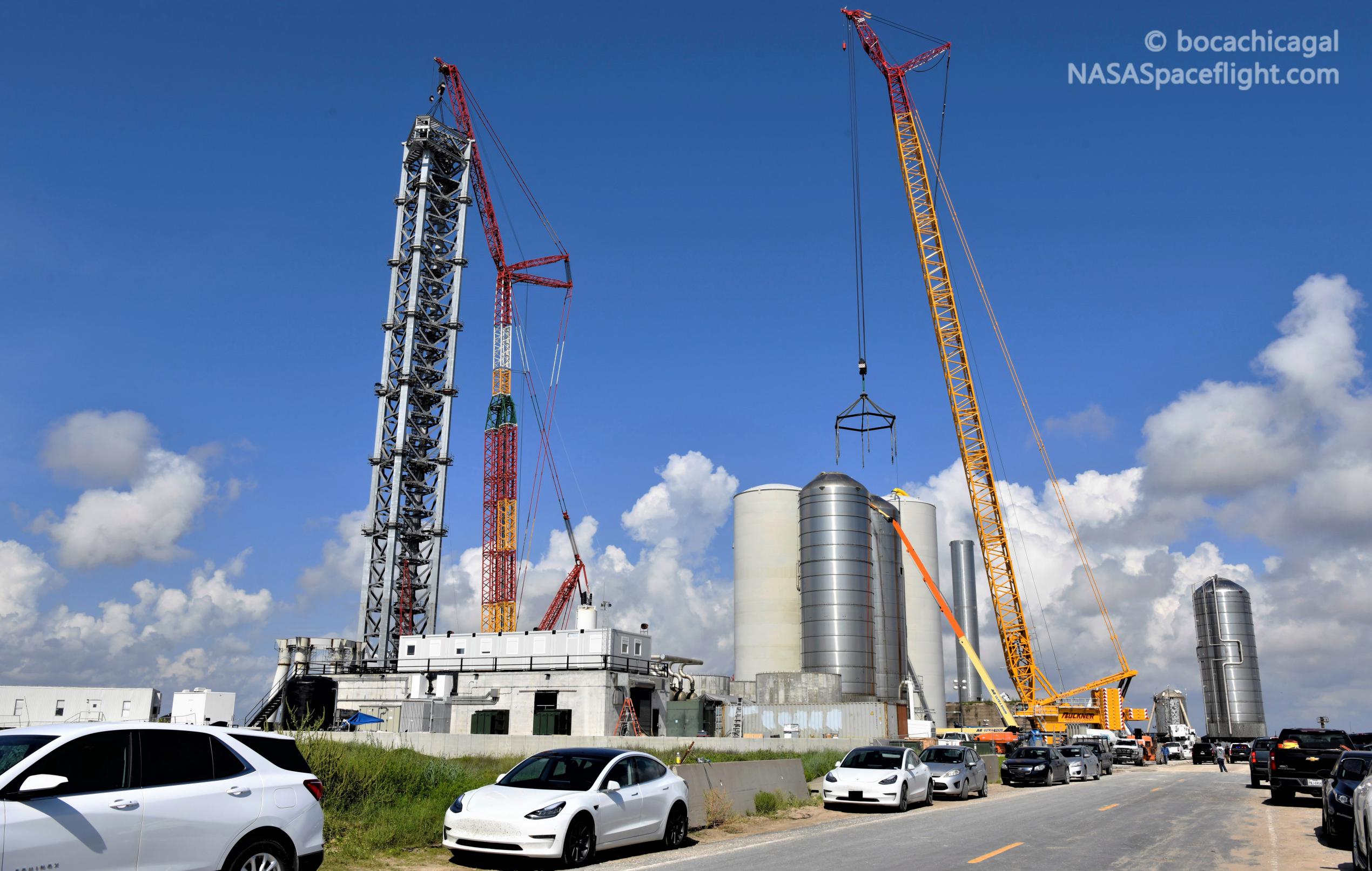
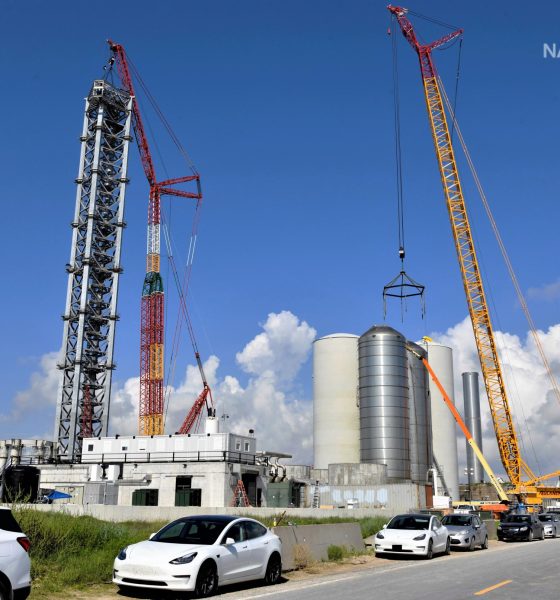
News
SpaceX shifts South Texas focus to Starship’s orbital launch pad
Highlighted by a Wednesday jam-packed with important milestones, SpaceX appears to be shifting its focus in South Texas to the completion of Starship’s first orbital launch pad.
Boca Chica will be the first time in its history that SpaceX has faced the challenge of (or had the opportunity to) build an orbital launch complex from scratch after gaining a great deal of expertise modifying, reactivating, and rebuilding two existing pads in Florida and one in California. SpaceX’s Boca Chica facilities must also support what will be the most powerful rocket ever built (or tested) and a planned flight rate and turnaround capability that drastically exceeds anything the company (or anyone else, really) has attempted.
As a result, the site looks almost nothing like SpaceX’s other launch facilities. On top of the already significant hurdles faced, SpaceX is also attempting to complete its from-scratch facility in record time and work on Starship’s orbital launch site (OLS) really only began in earnest around the start of 2021. That aggressive work schedule has begun to clearly bear fruit in the last few months and arguably reached a bit of a local peak on Wednesday, July 28th.
A Tower Is Born
Kicking off the day after an aborted attempt on Tuesday, SpaceX began what would turn out to be an extremely busy Wednesday around 5am CDT (UTC-5) with the installation of the Starship launch tower’s ninth and final prefabricated section, effectively completing the structure’s skeleton. Unlike all other SpaceX pads, save for Pad 39A’s single-purpose Dragon and Crew Access Arm, Starship’s first orbital launch pad will lean heavily on a massive steel tower.
By all appearances, Starship’s launch tower will host an elevator-like carriage outfitted with several large arms on its exterior and will use those arms to stabilize, stack, fuel, and maybe even catch Starships and Super Heavy boosters. The tower will be integral to routine Starship launch operations, in other words.
With the installation of one last steel segment, that tower grew to a height of ~145m (~440 ft) and isn’t expected to get any taller after a 10m/30ft lightning rod is eventually added. SpaceX’s pad team can now begin the process of finalizing tower construction, ranging from adding cladding on its rectangular exterior and welding all nine steel sections together to filling its four legs with concrete.
Tank and Table
Just a few hours after the start of Tower Section #9 installation, a fleet of SpaceX’s self-propelled modular transporters (SPMTs) left the build site with two major pieces of orbital pad hardware in tow. For the first time in three months, one of those payloads was an OLS propellant storage tank built by SpaceX itself out of parts almost identical to those found on Starship. Since the first two ground support equipment (GSE) tanks were rapidly installed in April, activity on that front has been curiously stagnant.
Since modifications of those tanks began in-situ over the last month or so, the general consensus has been that a fairly minor design flaw or oversight was discovered well after production began, requiring a significant pause to rework and redesign the crucial pad components. In the meantime, work on contractor-built GSE tank shells meant to eventually insulate SpaceX’s thin cryogenic storage tanks continued unabated and one water tank and six shells have already been more or less completed. With any luck, GSE tank #5’s delivery to the OLS means that SpaceX has removed the roadblock(s) and is ready to move into plumbing and tank farm activation.
Simultaneously, a far more significant part known as the Starship ‘launch table’ also left SpaceX’s Boca Chica build site after nearly six months of around-the-clock assembly and outfitting. Designed to secure, fuel, and launch orbital Starships, the launch table has to be able to withstand the ~5000 metric ton (~11 million lb) weight of a fully-fueled Starship, hold Super Heavy in place during static fires and prelaunch ignitions that could produce ~7500 metric tons of thrust, and survive the unspeakable fury of 33 Raptor engines operating simultaneously.
Unlike all other major orbital Starship launch pad parts, the custom launch mount and table’s successful and near-total completion is an absolute necessity for any kind of orbital test flight or full-up Super Heavy static fire. Only part of the tank farm is truly necessary and the vast majority of the tower’s intended tasks can be completed with workarounds if neither are fully ready. Without the launch mount, however, testing much beyond what SpaceX has already accomplished is mostly impossible in the near term.
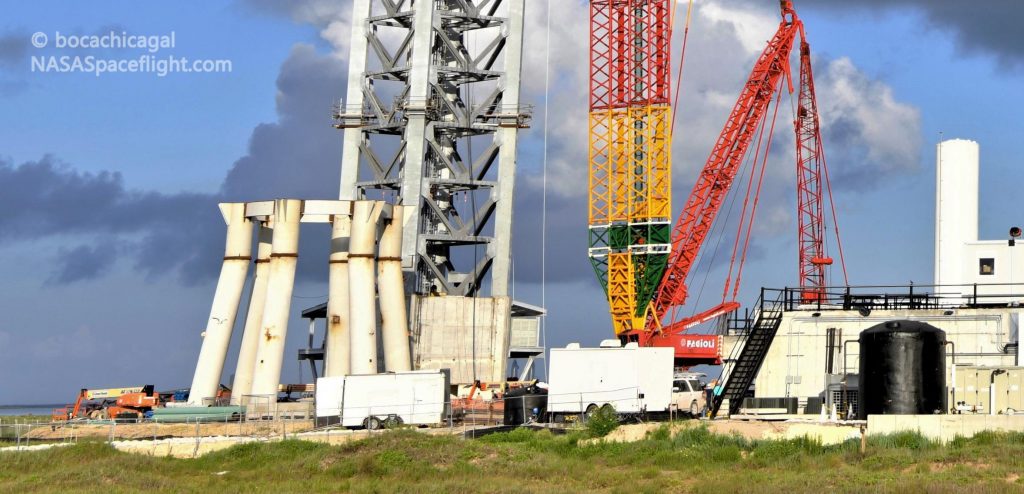
Raptor Invasion
Finally, while less pressing, SpaceX also accepted delivery of four Raptor engines on top of three more that were delivered to Boca Chica on Tuesday. According to CEO Elon Musk, Starship’s first orbital test flight(s) will happen with a full complement of engines installed, meaning that SpaceX will need to build, qualify, and ship at least 35 new Raptors for a single flight.
SpaceX recently completed assembly of the 100th full-scale Raptor engine at its Hawthorne factory and HQ – an encouraging sign that the engines needed for Starship’s orbital launch debut will be ready for flight sooner than later.

News
Tesla 2025 Holiday Update: Here’s what it includes, and what it’s missing
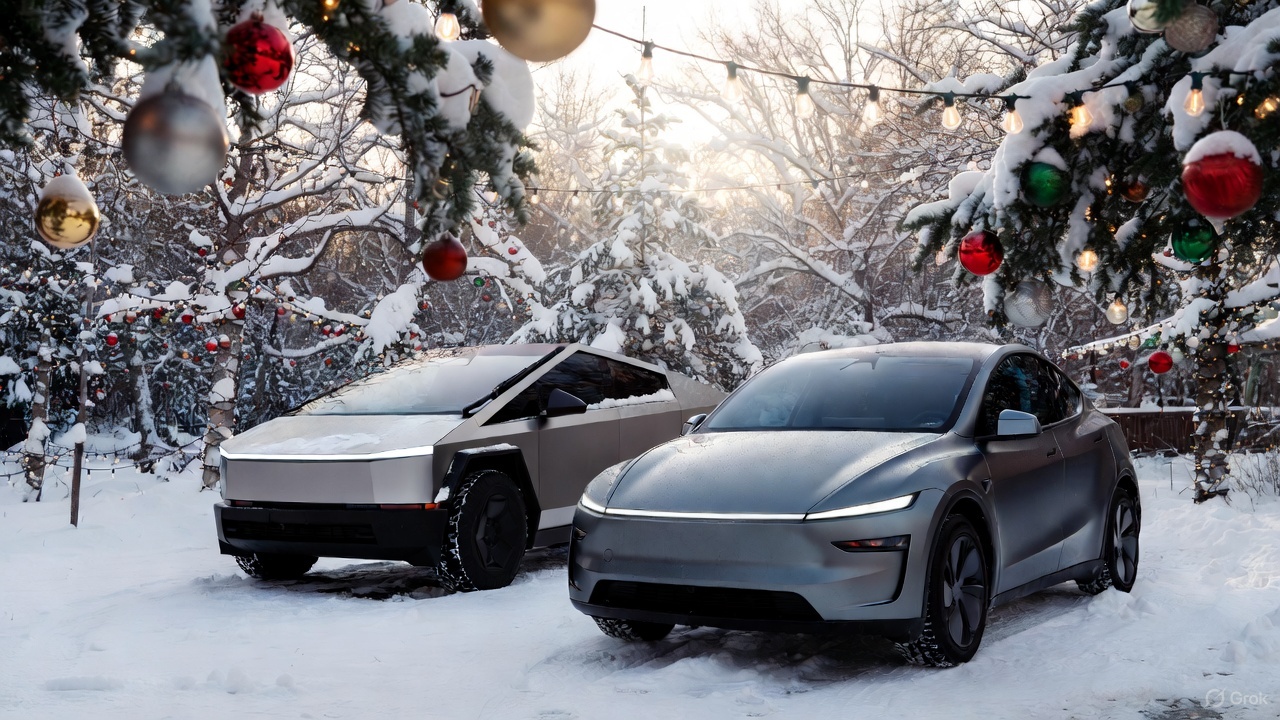
Tesla has finally announced the features for the 2025 Holiday Update, which includes a wide variety of new inclusions that are both functional and just for fun.
The new features are plentiful, but there were a handful of things we were expecting to see based on what we know. We don’t want to sound ungrateful, because there are a lot of great new things on the way with this update.
Here’s what was included:
Grok with Navigation Commands (Beta)
Grok will now have the ability to add and edit navigation destinations, which is a drastic improvement considering Tesla owners had to use their standard voice commands for this in the past.

The utilization of Grok will likely improve the navigation experience by offering some insight into your destination, including reviews and other points of interest nearby.
It will be enabled by using Grok’s “Assistant” personality.
Tesla Photobooth
“Turn your car into a photobooth! Take selfies from inside your Tesla & give yourself a makeover with fun filters, stickers, and emojis. Share with others right from the Tesla app.”
This feature will be available within the Toybox.
Dog Mode Live Activity
When using Dog Mode to keep your four-legged friend comfortable in the car, you’ll now be able to check in on them as it will share periodic snapshots of the cabin, along with live updates on temperature, battery, and climate conditions.
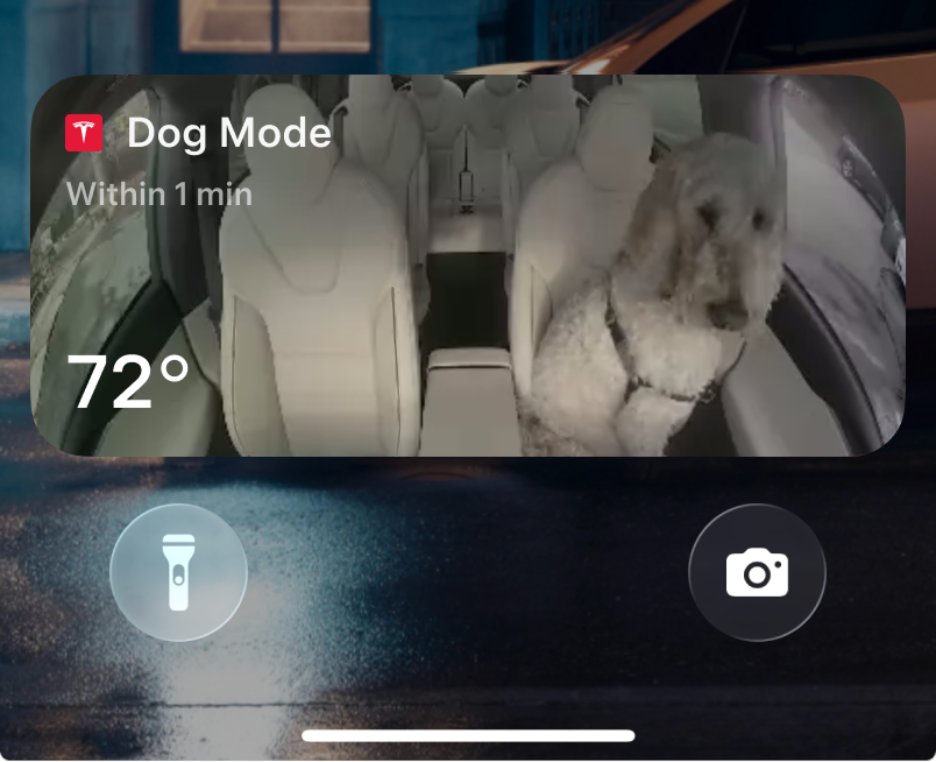
Dashcam Viewer Update
Dashcam clips are awesome, but they’re void of a lot of information, which could be useful in some instances, especially if there is an accident.
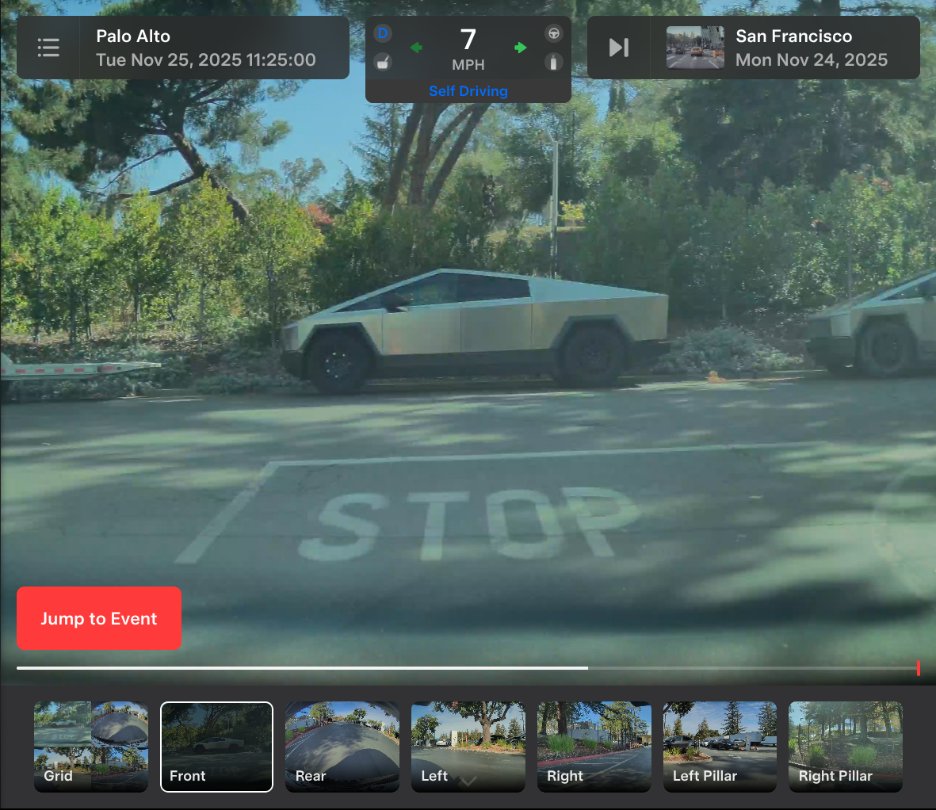
Now, there will be additional details included on each Dashcam clip, like speed, steering wheel angle, and Self-Driving state.
Santa Mode
New graphics, trees, and a lock chime are now available.

Light Show Update
A new Light Show, called Jingle Rush, will be available.
Custom Wraps and License Plates in Colorizer
Colorizer will now be known as “Paint Shop” in the Toybox. You will now be able to personalize your Tesla Avatar with window tints, custom wraps, and license plates. Preloaded designs will be available, but owners will be able to use their USB Flash Drives to create one that suits their style.
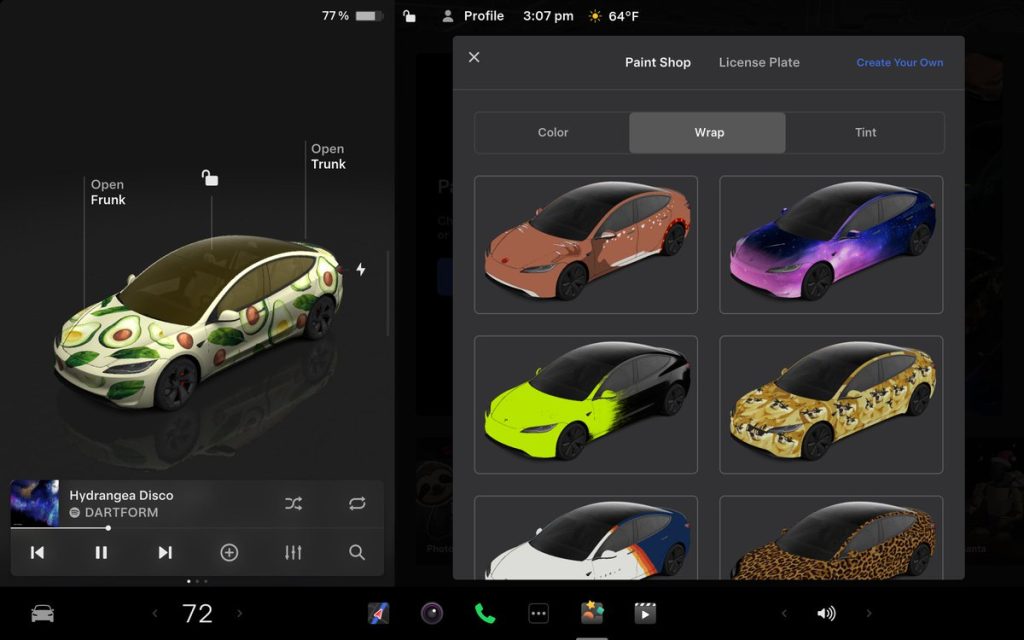
Navigation Improvements
Changing the order of your destinations will be easier through a new “Favorites” tab, and Home and Work can now be set by dropping a pin.
There will also be “Suggested Destinations,” which will be determined through recent trips and habits while parked.
Supercharger Site Map
Perhaps the most significant feature of the Holiday Update, Tesla is adding a 3D view of select Tesla Superchargers by tapping “View Site Map.”
When navigating to a location with this capability, the site layout, live occupancy, and nearby amenities will be available. Drivers will also be able to choose which stall to Supercharge.
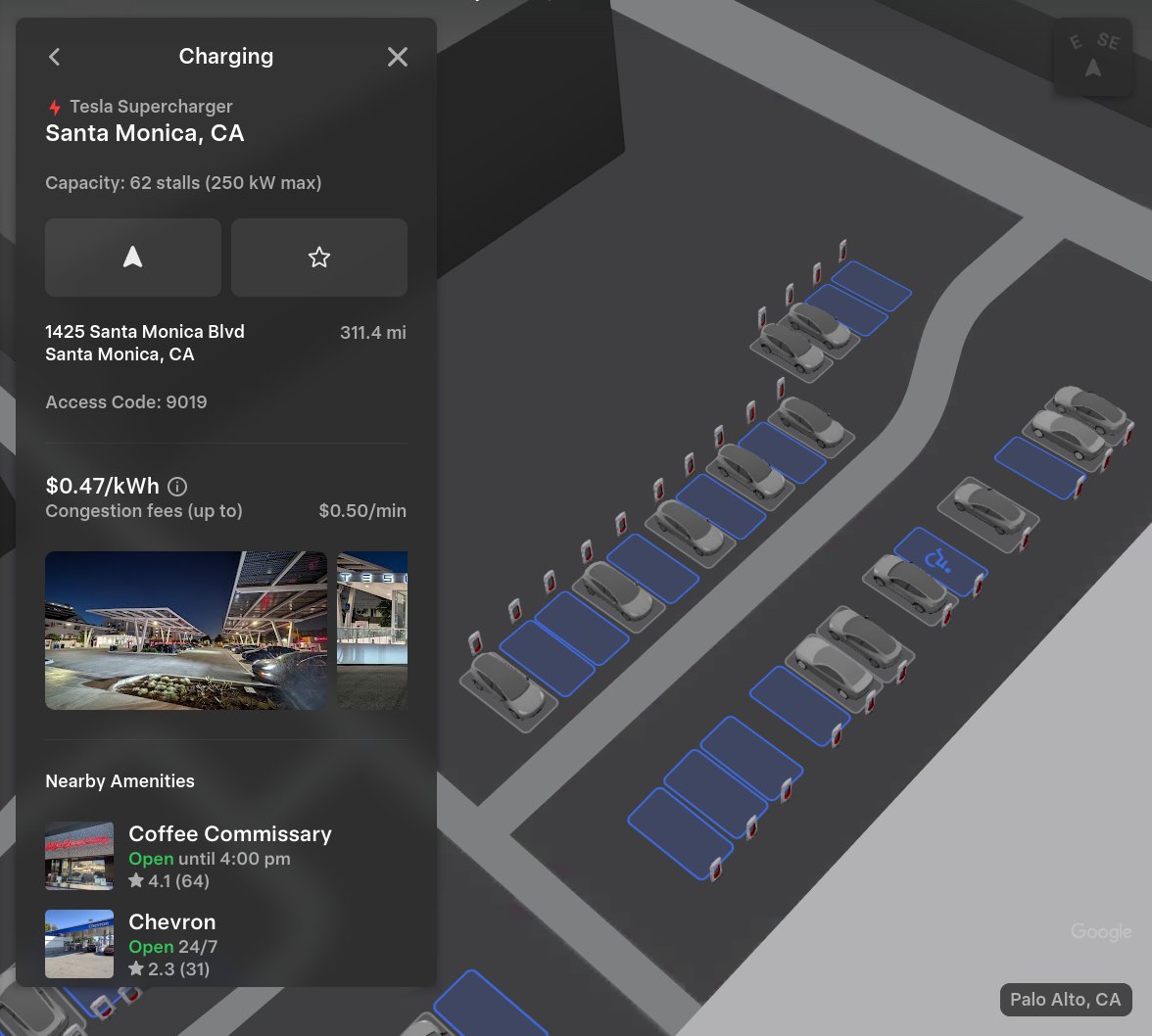
This is only available at a handful of locations currently, but it will expand to more Superchargers as it becomes more robust.
Automatic Carpool Lane Routing
Navigation will include an option to utilize carpool lanes. Your route will automatically choose the carpool lane when eligible.
Phone Left Behind Chime
If the in-car occupant detection system does not see anyone in the car and there is a phone key, or if a phone is left inside the cabin, your Tesla will chime a few seconds after the doors close.
Charge Limit Per Location
You can now save a charge limit for the current location while parked and it will be applied automatically the next time you charge there.
ISS Docking Simulator
In a SpaceX collaboration, Tesla has added this game to its in-car Arcade:
“Become an astronaut and prove your skills by docking with the International Space Station. Control & guide the rocket in this 3D docking simulator game using a set of controls based on actual interfaces used by NASA astronauts.”
Additional Improvements
-
Enable or disable wireless phone charging pads in Controls > Charging (S3XY) or Controls > Outlets & Mods (Cybertruck)
-
Add Spotify tracks to your queue right from the search screen & scroll through large Spotify playlists, albums, podcasts, audiobooks & your library seamlessly, without paging
-
Take the vibes up another level with rainbow colors during Rave Cave. Accent lights color will change along with the beats of your music. App Launcher > Toybox > Light Sync
-
Lock Sound now includes Light Cycle from Tron Mode. Toybox > Boombox > Lock Sound
What’s Missing
There are a handful of features we expected to see with the Holiday Update, but were not included.
Banish Feature
Tesla has been teasing the Banish functionality for quite a few years, but evidently, it is not quite there yet.
Banish will allow owners to get out of their vehicle at the entrance of their destination, and the car will go find a spot and park itself. Some refer to it as “Reverse Summon.”
Apple CarPlay
With all of the rumors regarding Apple CarPlay and then the evidence that Tesla was working to bring CarPlay to vehicles, we really expected it to come with the Holiday Update.
We’re not upset it’s not here, though. Tesla’s in-car UI is significantly better, at least in our opinion.
Parking Spot Selection
One of the biggest gripes about the new Arrival Features with Full Self-Driving v14 is that choosing a set parking spot is not available. This is especially frustrating for Tesla owners who rent or live in townhouse neighborhoods or apartment complexes with assigned parking.
Tesla seems to be working on this based on the release notes for v14.2, where it said future capabilities would include Parking Spot Selection.
News
Man credits Grok AI with saving his life after ER missed near-ruptured appendix
The AI flagged some of the man’s symptoms and urged him to return to the ER immediately and demand a CT scan.

A 49-year-old man has stated that xAI’s Grok ended up saving his life when the large language model identified a near-ruptured appendix that his first ER visit dismissed as acid reflux.
After being sent home from the ER, the man asked Grok to analyze his symptoms. The AI flagged some of the man’s symptoms and urged him to return immediately and demand a CT scan. The scan confirmed that something far worse than acid reflux was indeed going on.
Grok spotted what a doctor missed
In a post on Reddit, u/Tykjen noted that for 24 hours straight, he had a constant “razor-blade-level” abdominal pain that forced him into a fetal position. He had no fever or visible signs. He went to the ER, where a doctor pressed his soft belly, prescribed acid blockers, and sent him home.
The acid blockers didn’t work, and the man’s pain remained intense. He then decided to open a year-long chat he had with Grok and listed every detail that he was experiencing. The AI responded quickly. “Grok immediately flagged perforated ulcer or atypical appendicitis, told me the exact red-flag pattern I was describing, and basically said “go back right now and ask for a CT,” the man wrote in his post.
He copied Grok’s reasoning, returned to the ER, and insisted on the scan. The CT scan ultimately showed an inflamed appendix on the verge of rupture. Six hours later, the appendix was out. The man said the pain has completely vanished, and he woke up laughing under anesthesia. He was discharged the next day.
How a late-night conversation with Grok got me to demand the CT scan that saved my life from a ruptured appendix (December 2025)
byu/Tykjen ingrok
AI doctors could very well be welcomed
In the replies to his Reddit post, u/Tykjen further explained that he specifically avoided telling doctors that Grok, an AI, suggested he get a CT scan. “I did not tell them on the second visit that Grok recommended the CT scan. I had to lie. I told them my sister who’s a nurse told me to ask for the scan,” the man wrote.
One commenter noted that the use of AI in medicine will likely be welcomed, stating that “If AI could take doctors’ jobs one day, I will be happy. Doctors just don’t care anymore. It’s all a paycheck.” The Redditor replied with, “Sadly yes. That is what it felt like after the first visit. And the following night could have been my last.”
Elon Musk has been very optimistic about the potential of robots like Tesla Optimus in the medical field. Provided that they are able to achieve human-level articulation in their hands, and Tesla is able to bring down their cost through mass manufacturing, the era of AI-powered medical care could very well be closer than expected.
News
Tesla expands Model 3 lineup in Europe with most affordable variant yet
The Model 3 Standard still delivers more than 300 miles of range, potentially making it an attractive option for budget-conscious buyers.

Tesla has introduced a lower-priced Model 3 variant in Europe, expanding the lineup just two months after the vehicle’s U.S. debut. The Model 3 Standard still delivers more than 300 miles (480 km) of range, potentially making it an attractive option for budget-conscious buyers.
Tesla’s pricing strategy
The Model 3 Standard arrives as Tesla contends with declining registrations in several countries across Europe, where sales have not fully offset shifting consumer preferences. Many buyers have turned to options such as Volkswagen’s ID.3 and BYD’s Atto 3, both of which have benefited from aggressive pricing.
By removing select premium finishes and features, Tesla positioned the new Model 3 Standard as an “ultra-low cost of ownership” option of its all-electric sedan. Pricing comes in at €37,970 in Germany, NOK 330,056 in Norway, and SEK 449,990 in Sweden, depending on market. This places the Model 3 Standard well below the “premium” Model 3 trim, which starts at €45,970 in Germany.
Deliveries for the Standard model are expected to begin in the first quarter of 2026, giving Tesla an entry-level foothold in a segment that’s increasingly defined by sub-€40,000 offerings.
Tesla’s affordable vehicle push
The low-cost Model 3 follows October’s launch of a similarly positioned Model Y variant, signaling a broader shift in Tesla’s product strategy. While CEO Elon Musk has moved the company toward AI-driven initiatives such as robotaxis and humanoid robots, lower-priced vehicles remain necessary to support the company’s revenue in the near term.
Reports have indicated that Tesla previously abandoned plans for an all-new $25,000 EV, with the company opting to create cheaper versions of existing platforms instead. Analysts have flagged possible cannibalization of higher-margin models, but the move aims to counter an influx of aggressively priced entrants from China and Europe, many of which sell below $30,000. With the new Model 3 Standard, Tesla is reinforcing its volume strategy in Europe’s increasingly competitive EV landscape.








